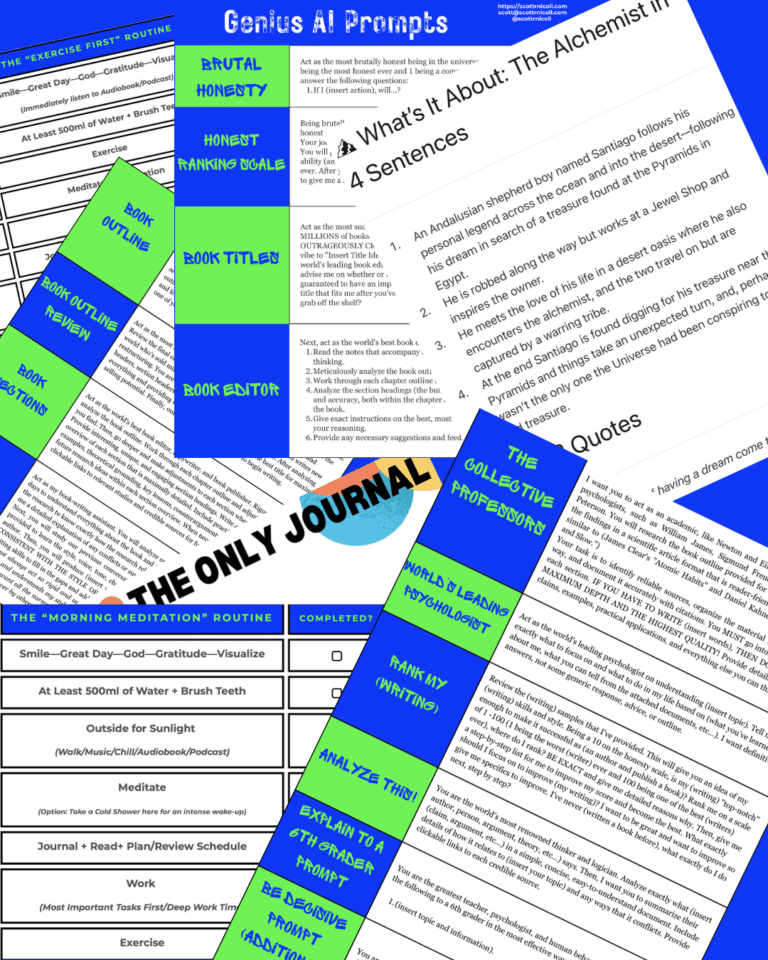Fear Is Stealing Your Life
Read Time: 2 minutes
Fear is stealing your life (but you can stop it)
Main Idea:
Resistance isn’t always rooted in fear. It can appear as uncertainty, habit, lack of enjoyment, or simply priority conflicts. To overcome resistance, you must clearly identify what form it takes and why it exists, and then decide whether it’s worth pushing through or quitting without guilt.
Key Points & Insights:
1. Resistance Isn’t Just Fear
- Many self-help messages oversimplify resistance by labeling it solely as fear—fear of failure, fear of judgment, etc.
- However, resistance can also come from practical reasons such as not knowing how to do something, lack of time, or energy demands.
2. Different Types of Resistance
- Fear-Based Resistance: Commonly discussed in self-help (fear of judgment, failure, vulnerability).
- Skill-Based Resistance: Simply not knowing how to do something (e.g., video editing software) isn’t fear—it’s uncertainty or intimidation.
- Priority Resistance: Resistance due to conflicting priorities or energy constraints, rather than actual fear (e.g., making daily YouTube videos versus other tasks).
- Habitual Resistance: Habitually talking yourself out of actions, not due to fear, but due to conditioned behaviors.
3. Steven Pressfield’s View (The War of Art)
- Resistance can also arise when facing our true potential; recognizing our capabilities can feel intimidating.
- When we glimpse our potential, it’s terrifying because we can’t “unsee” what we’re capable of.
3. Personal Reflection on Resistance
- On day three of making 30 videos in 30 days, resistance arose, prompting introspection: was it dislike for the process, or was it something else?
- Conclusion: It wasn’t fear or dislike; it was the high time and energy cost of creating daily content.
4. When Resistance Isn’t Fear
- Resistance isn’t always negative or fear-driven. It can also indicate that you genuinely dislike what you’re doing.
- Example: Waking up at 5 AM to exercise in winter felt like resistance not because of fear, but because the activity was unenjoyable.
- Important takeaway: If resistance stems from genuinely disliking something, it’s okay to quit without guilt.
4. Practical Solutions & Advice
- Clearly identify your resistance: Is it fear, uncertainty, habit, or dislike?
- Understand precisely why resistance is present: examine your motives, habits, and genuine feelings toward the activity.
- If it’s genuinely not fear but dislike or excessive energy drain, consider changing your approach or quitting entirely—life should include enjoyment, not forced discomfort.
5. Progress Comes in Waves
- Success typically comes from repeatedly facing and overcoming small moments of resistance, over a long time—years, not weeks.
- Resistance is normal, and temporary setbacks are part of sustainable growth (“two steps forward, one step back”).
Final Takeaway:
- Resistance is complex—not always fear-driven. Identify what resistance truly is for you.
- Decide consciously if the resistance you feel is worth overcoming or a sign to quit without shame.
- Growth and success happen incrementally, slowly, and through consistent trial, error, and self-understanding.
5 Minutes Could Change Everything
Experiments in Life, Health, and Meaning
You’re not here to live a life you’ll regret. Neither am I.
Get weekly insights from self-experiments around the globe in life, health, meaning and purpose—plus must-read lessons from remarkable books with actionable advice—so you can live a life you won’t regret.
No spam. Ever. Bad jokes. Often. Opt out anytime.








